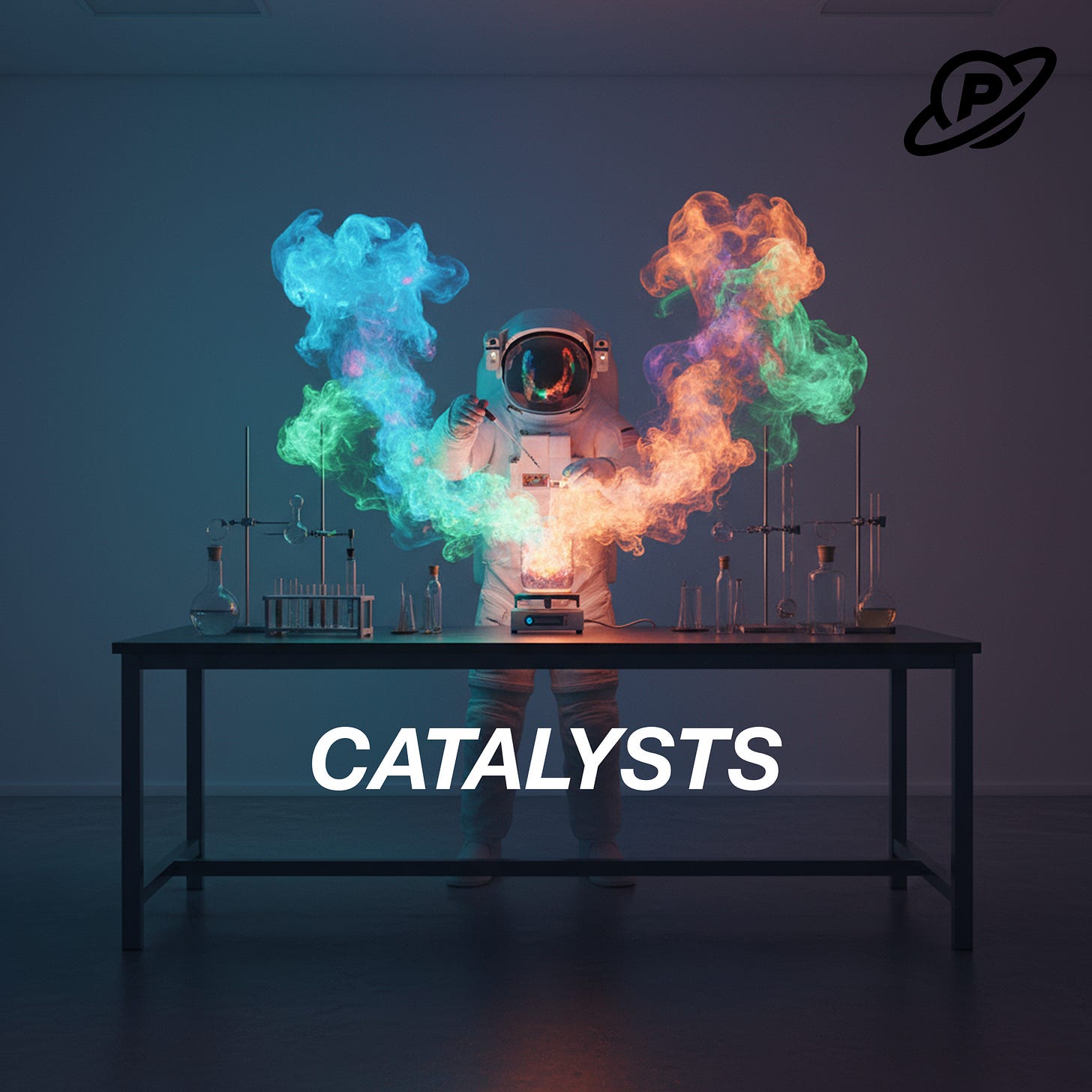Catalysts - Mental Model: Accelerating Change
Speeding up reactions.
It’s spring 2023, and we’re hearing grave news. During a meeting with all the managers, the CEO speaks with a trembling voice: “Unfortunately, we need to let people go.” The company needed to do layoffs to stay afloat, something unthinkable in the previously booming IT market, but here we are.
That moment catalysed a change in my perspective on employment. I wasn’t laid off in spring 2023, but when my turn came a few months later, I’d already been questioning my definition of stability at work. The first round of layoffs planted the seed: I took a gap year to explore what I want to do next, and I’m still building independently two years later.
In chemistry, catalysts lower activation energy and speed up reactions.
Change can happen without catalysts, but they accelerate the process. As a mental model, catalysts help us understand how change happens.
Examples
Catalysts don’t create new possibilities. They remove barriers to what was already possible:
COVID didn’t invent remote work, but sped up its adoption, as it became a necessity.
Deadlines act as catalysts for productivity. I rarely push myself effectively without them.
Layoffs reveal that employment stability can be an illusion.
By understanding how catalysts work, we can take advantage of them.
Applications
With Events
When something unexpected happens, ask:
What is possible now that wasn’t possible before?
Operating with smaller teams can catalyse process improvements. Key team members leaving can catalyse better knowledge sharing. These events lower the activation energy needed for change.
Some catalysts wear off. When COVID restrictions ended, many companies returned to offices. True change happens when we shape the environment to prove the benefits by showing that remote work works, not just because a crisis forced it (and no, I’m not calling for another pandemic to test this).
Self Driven
Knowing how catalysts are everywhere, we can intentionally work to lower the activation energy for our actions.
I publicly announced the start of the newsletter by inviting friends to a launch party, which was a great catalyst. Scheduling time in your calendar in advance to focus on certain things can work wonders, as long as you use it. Sometimes, taking the first step is enough to push us to take a certain action.
“The key to daily practice is to put your desired actions as close to the path of least resistance as humanly possible. Identify the activation energy—the time, the choices, the mental and physical effort they require—and then reduce it.”
— Shawn Achor, The Happiness Advantage
The stronger the catalyst, the more it accelerates change, but you still need to act.
Summary
Catalysts don’t create opportunities but accelerate change. Spotting them can help us improve how we operate.
When to think about this mental model:
When stuck: What could act as a catalyst to lower the activation energy?
In crisis: What is possible now that wasn’t possible before?
Improving your habits: How can I make it easier for myself to follow through?
In change management: What actions can help us make it easier for everyone?
Thanks for reading!
— Michał
Post Notes
Discover Weekly — Shoutouts
Great articles which I’ve read recently:
How Slowing Down Can Help You Build Smarter by
Why 97% of Job Seekers Use AI Wrong (And How to Be in the 3%) by
Connect
LinkedIn | Substack DM | Mentoring | X | Bsky




Thanks Michał, both for the shoutout and the excellent article. I really appreciate the nuance you have brought to considering catalysts and that like you say without action they have nothing to work on! 🙏